Avocado Tree Leaves Turning Brown: Causes and Solutions
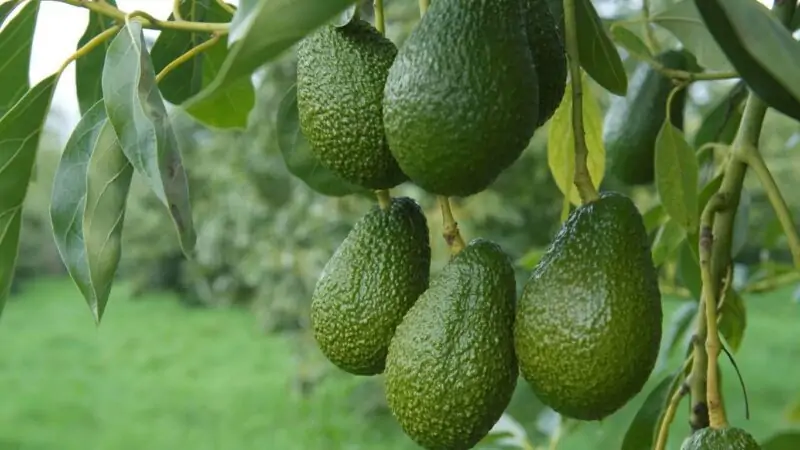
Avocado trees are a fantastic addition to any garden, providing delicious fruits high in healthy fats. However, if you notice the leaves of your avocado plant starting to turn brown, it could signal trouble. Brown leaves on an avocado tree can indicate a range of issues related to watering, sunlight exposure, soil quality, or disease. Young avocado trees are more sensitive to these problems, and damaged leaves may appear on both mature and growing avocado trees. In this article, we will discuss the most common reasons for avocado tree leaves turning brown and how to prevent or treat these problems.
Understanding Why Avocado Leaves Turn Brown
Insufficient Watering
One of the primary reasons for browning on the edges of an avocado leaf is insufficient watering. When there is not enough water in the soil surrounding your tree’s roots, its foliage begins losing moisture. This leads to wilting, which results in browning at the tips, then spreads over time throughout the whole leaf, causing dryness and brown spots on the leaves.
To prevent this issue, ensure that you give adequate amounts of water regularly to your avocado tree. The frequency depends on weather conditions and the maturity of the tree. During summers, mature avocado trees need more frequent watering, while winters require less. Make sure each time you water, their root system remains moist without getting soggy wet. Watering the tree with rainwater can also be beneficial for maintaining healthy leaves and branches.
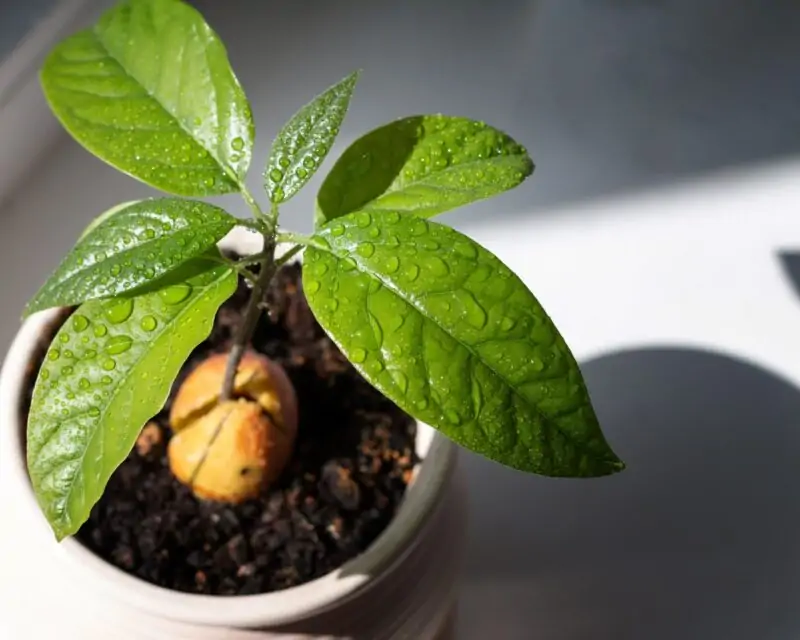
Keep an eye on the leaves of your avocado tree as new healthy leaves should appear with proper care. If the problem persists or leaves are starting to turn brown and dry even with adequate watering, consider checking the area around the tree for any potential causes, such as pests or diseases, that could lead to avocado tree leaves turning brown.
Excessive Sun Exposure and Sun Scorch
Another reason behind brown spots forming on your avocados’ delicate leaves, or even causing the leaves of avocado trees to turn brown, may be excessive sun exposure. This is especially true during the hottest parts of the day, resulting in a scorching effect. Intense heat rays can damage chlorophyll pigments present in the leaves, making them appear dull yellowish-brown instead of vibrant green, and potentially causing the leaves to become dry.
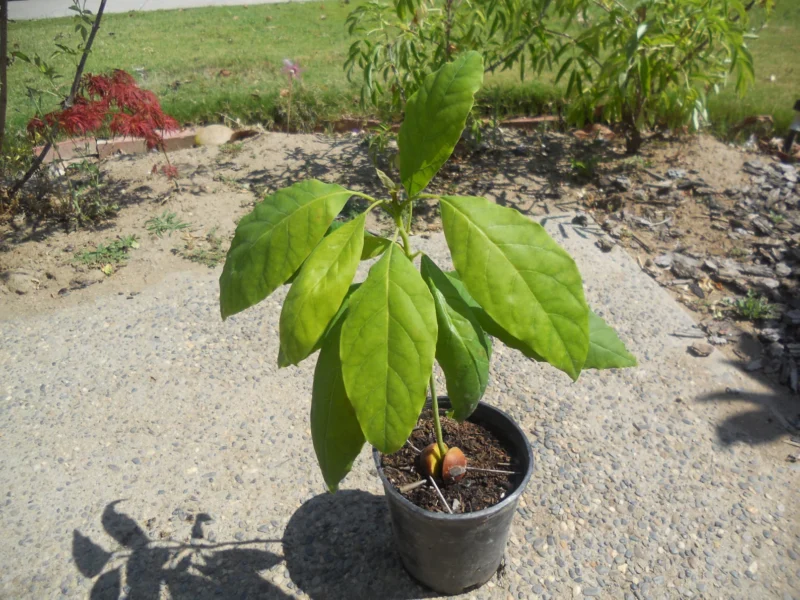
Protect young plants and newly planted avocado trees with shade cloth until they acclimate themselves better under direct sunlight. Gradually reduce protection levels as per their growth requirements, allowing the adaptation process to occur naturally without damage from harmful UV radiation. Ensure your tree is getting enough sunlight, but also consider the plant and its leaves’ sensitivity to excessive heat, especially if the avocado comes from a humid environment.
Soil Issues: Salt Accumulation and Nutrient Deficiencies
The avocado tree is sensitive to soil issues, such as salt accumulation and nutrient deficiencies. Salts can accumulate in the soil over time due to poor drainage or excessive use of fertilizers. This can cause toxicity, resulting in brown spots on leaves.
Nutrient deficiencies can also cause browning of avocado leaves. If your tree lacks essential nutrients like nitrogen, iron, or magnesium, it may experience yellowing followed by brown leaf margins. These indicate deficiency symptoms that require attention for proper growth.
To avoid these problems, make sure you have well-draining soil with balanced pH levels. Add organic matter regularly along with fertilizer applications at the right intervals according to the plant’s needs.
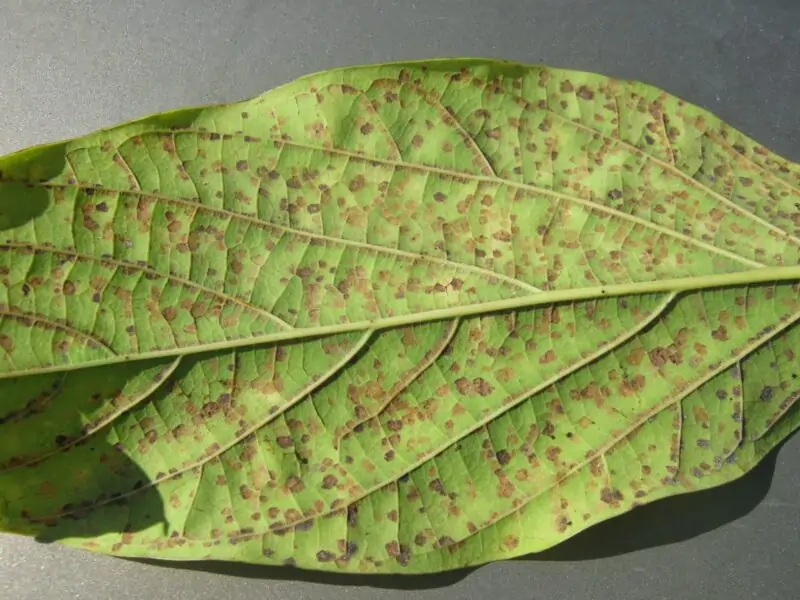
Temperature Extremes: Dry Air, Frost, and Humidity
Temperature extremes can damage avocados’ foliage, making their leaves turn brown when exposed to excessively hot, dry air conditions during summers or freezing cold temperatures in winters. This can affect the metabolism process within plant cells, damaging cell structures, and changing the external appearance of the leaves from green to dull-brownish hues. Eventually, the leaves may dry out completely if not taken care of immediately.
Protect young trees from frost using protective covers while maintaining optimal humidity levels around 50-60% range inside greenhouse facilities. This helps prevent dehydration effects caused by excess evaporation rates under low humid conditions.
Fungal Diseases and Avocado Algal Leaf Spots
Fungal diseases such as anthracnose and root rot are common culprits behind an avocado’s browning foliage. These fungi thrive in moist environments where there is poor air circulation, leading to spore formation and infecting plant tissues.
Avocado algal leaf spots are another issue that can cause browning on avocado leaves. These spots appear as small, circular black dots and gradually grow larger over time, leading to discoloration and browning.
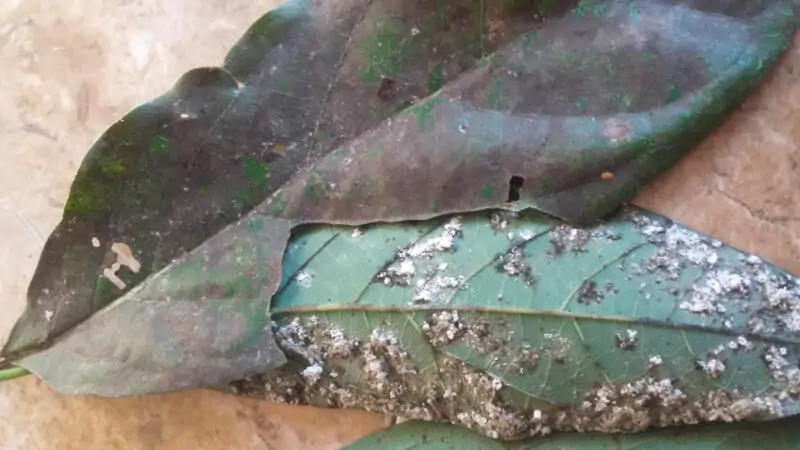
To prevent these issues, ensure proper hygiene practices like cleaning and pruning tools regularly after use. Avoid overcrowding planting areas and provide adequate air circulation around plants by trimming foliage. Maintain optimal humidity levels inside greenhouse facilities to prevent excess moisture accumulation in soil surfaces.
Pests: Persia Mite, Mealybugs, and Avocado Thrips
Pests such as persia mites or mealybugs can also be responsible for causing brown patches on your avocado tree’s leaves. These insects feed by sucking sap from the underside of the leaves, resulting in yellowing followed by browning. If left unchecked, the infestation can spread across the whole plant and quickly infest other nearby trees.
Another pest to watch out for is the avocado thrip, which feeds on young fruit causing deformities and scarring. It also damages new growth and infects surrounding tissues with its saliva, making them susceptible to disease outbreaks later on.
To avoid these problems, keep an eye out for any signs of insect infestation. Early detection is key for effective control measures to be taken immediately, limiting the damage and reducing losses.
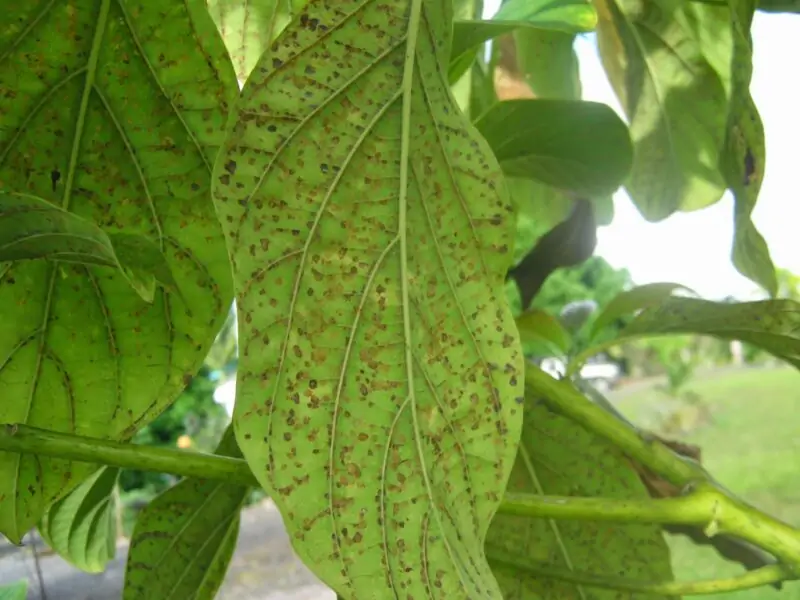
Edema (Oedema)
Edema occurs when there is excessive water absorption in a part or parts of a plant that cannot release it fast enough. This can cause the cells to rupture, leading to a blister-like appearance on the leaves and stems of your avocado tree. As these blisters dry out, they turn brown.
To prevent edema from occurring in your avocado trees, make sure you water them properly. Avoid overwatering or underwatering, as both conditions can lead to excessive water absorption, causing tissue damage and leaf browning due to cell rupture.
Monitoring the base of the tree and the area near the tree can help identify any additional stress factors that may cause avocado tree leaves to turn brown. By addressing these factors and adjusting the care provided, you can promote the growth of new leaves and maintain the overall health of your avocado tree.
Troubleshooting and Solutions for Brown Avocado Leaves
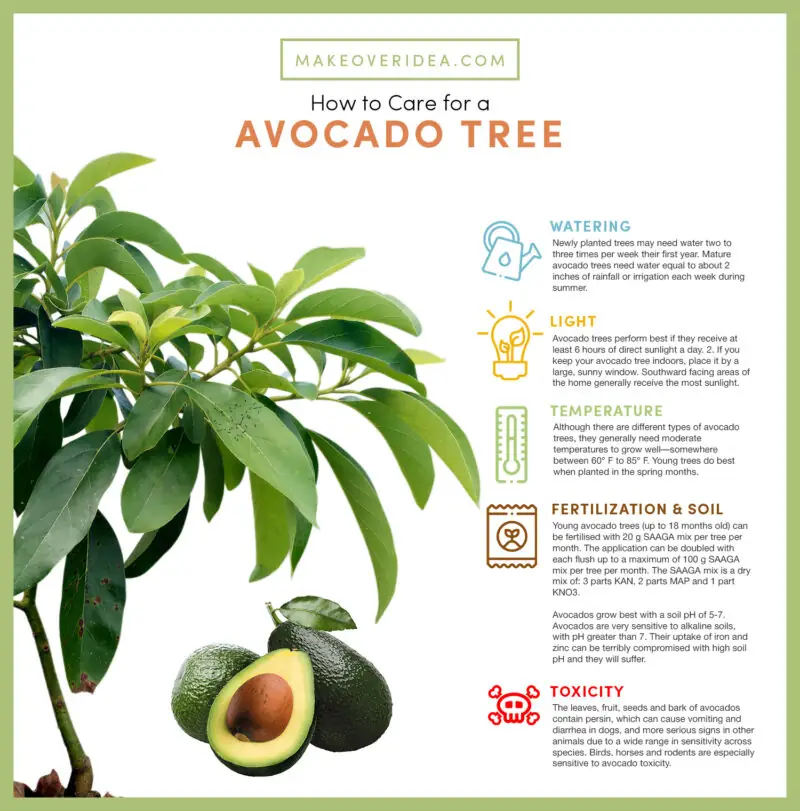
Brown leaves on an avocado tree may indicate several issues, such as insufficient watering or excessive sun exposure. Here are some troubleshooting tips for addressing these problems:
Adjusting Watering Practices and Monitoring Soil Moisture
One common reason for browning avocado leaves is underwatering or overwatering. Both lead to root damage and subsequent leaf burn. To address this issue:
- Monitor soil moisture regularly by sticking your finger into it up to knuckle depth. Only water when the topsoil feels dry but still slightly moist beneath the surface level.
- Avoid using hard tap water with high salt content. Instead, opt for rainwater collection methods where possible.
- Always ensure good drainage conditions around the plant base area, so excess water doesn’t accumulate, causing root rot.
Providing Adequate Sun Protection and Temperature Control
Avocado trees need plenty of sunshine, but too much direct sunlight can cause their foliage to turn brown due to UV radiation scorch. To prevent this:
- Provide shade during the hottest parts of the day (11 am-3 pm), especially during summer months when temperatures peak at midday hours.
- Consider installing shading nets or umbrellas near planting sites if natural shading isn’t already present within surrounding environment conditions.
Addressing Soil Issues: Reducing Salinity and Ensuring Proper Nutrition
Salinity buildup in soils leads to nutrient deficiencies, ultimately resulting in leaf burn symptoms. To counteract this problem:
- Add organic matter-rich compost, manure, or mulch around the base areas throughout the growing season.
- Use balanced NPK fertilizers containing essential micronutrients like magnesium, iron, and sulfur to promote healthy growth.
- Monitor soil pH levels regularly and adjust accordingly if necessary.
Treating Fungal Diseases and Algal Leaf Spots
Fungal diseases like anthracnose or root rot can cause avocado leaves to turn brown. You may also notice black spots on the undersides of the leaves, which could be a sign of algal leaf spots. To treat these issues:
- Use fungicides specific for treating fungal infections in plants.
- Remove any infected foliage from your tree immediately after noticing them to prevent further spread.
- Ensure proper air circulation around the plant base area by pruning back overgrowth branches and leaves where possible.
Managing Pests and Preventing Infestations
Pests like persia mites, mealybugs, or thrips can infest avocado trees, leading to foliage discoloration or browning. To prevent this problem:
- Keep an eye out for early signs of pest activity, like tiny dots moving across surfaces.
- Use natural predators like ladybugs or insecticidal soaps and sprays.
- Avoid using synthetic pesticides wherever possible.
Improving Air Circulation and Humidity Levels
High humidity levels and poor air circulation conditions create ideal environments for fungal spore and mold development, leading to browning leaf symptoms. To improve this situation:
- Increase ventilation and circulation rates by installing fans near planting site locations where feasible.
- Use humidifiers or dehumidifiers depending on current moisture content level readings at given times throughout the growing season.
Frequently Asked Questions (FAQs)
Avocado trees are a popular addition to many gardens, providing not only delicious fruit but also adding beauty and shade. However, sometimes avocado tree leaves can turn brown, which can be concerning for gardeners. Here are some frequently asked questions about why avocado leaves turn brown.
Brown tips on the ends of your avocado tree’s leaves could be due to several factors. One common cause is over-fertilization or salt accumulation in the soil that leads to leaf burn. Another possibility is underwatering or poor drainage causing root damage and subsequent leaf browning.
Both under- and over-watering can lead to browning of your avocado tree’s foliage. Overwatered plants may have yellow-green new growth, with older foliage turning dark green before becoming brittle and dying off entirely. Under-watered plants will show signs like curliness around their edges as well as tip-burn symptoms, such as those mentioned earlier.
Transplant shock often manifests through wilting, followed by discoloration along the margins or edges, then eventually spreading inward towards the center until the leaf turns entirely yellowish-brown. This indicates severe stress caused by a lack of water or nutrients during the initial adjustment period post-transplantation when roots haven’t yet established themselves properly in the new environment. To avoid this situation:
Make sure you plant them in well-draining soil mixtures that contain sufficient organic matter. This will help retain moisture without being overly wet while allowing proper air circulation through root space.
Keep an eye out for any changes happening early on after the planting time frame has passed.
Potted Avocado Trees require extra care compared with ones planted directly in the ground. They are more susceptible to brown leaves as they can easily become waterlogged or dry out quickly if not monitored regularly. It is important to make sure that your potted avocado tree has:
Adequate drainage holes and a well-draining soil mix.
Balanced fertilization to avoid over-fertilization.
Sufficient sunlight exposure.
Regularly checked moisture levels to maintain proper hydration.
Conclusion
Taking care of avocado trees can be challenging, but it’s worth the effort. With proper watering practices, adequate sun protection and temperature control, soil management techniques, and pest prevention strategies in place, you can keep your avocado tree healthy with lush green leaves all year round. Don’t forget to monitor your tree for signs of brown spots or dryness on the leaves regularly to catch any issues early on before they become severe problems. By following these steps and being attentive to your plant’s needs, you will enjoy fresh avocados from your backyard for years to come!